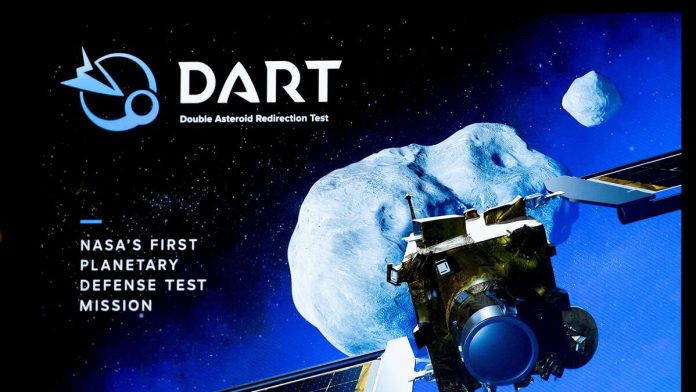NASA’s Double Asteroid Redirection Test (DART) could potentially send debris from the asteroid Dimorphos on a collision course with Earth and Mars, according to a study accepted for publication in The Planetary Science Journal. The DART mission, which took place in September 2022, involved a spacecraft striking Dimorphos, a small moon orbiting the larger asteroid Didymos. The aim was to demonstrate a method of deflecting potentially hazardous asteroids. However, the impact could result in debris being flung into space, potentially reaching Earth and Mars.
The study, conducted by an international team of researchers, used simulations to determine the potential trajectory of the debris. The team relied on data from the Light Italian CubeSat for Imaging of Asteroids, which accompanied the DART mission. Supercomputers at NASA’s Navigation and Ancillary Information Facility were used to create the simulations, which tracked the 3 million particles resulting from the Dimorphos collision.
The simulations suggest that particles ejected at speeds greater than 1.5 kilometers per second could reach Earth in as little as seven years. Meanwhile, those ejected at velocities below 500 meters per second could reach Mars in a little over a decade. Despite these findings, it is likely to be 30 years before any of the debris lands on Earth. The faster, smaller particles are unlikely to produce visible meteors, but scientists will be monitoring the skies for potential meteor showers, dubbed the Dimorphids.
There is nothing to worry about because any fragments that reach Earth will disintegrate in the atmosphere, creating a brilliant display but doing no harm. Astronauts on subsequent journeys to space could see fragments of Didymous burn up in the Mars atmosphere as well.
NASA’s DART mission was a success, with the spacecraft’s impact altering Dimorphos’ orbit around Didymos by 32 minutes. This marked humanity’s first time purposely changing the motion of a celestial object and the first full-scale demonstration of asteroid deflection technology. The European Space Agency’s Hera mission will rendezvous with the double-asteroid system by October 26 to survey Dimorphos and ensure that similar collision techniques can be used in the future to divert asteroids from Earth.

Recent Comments